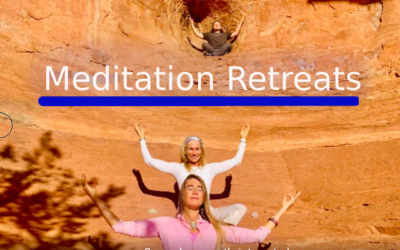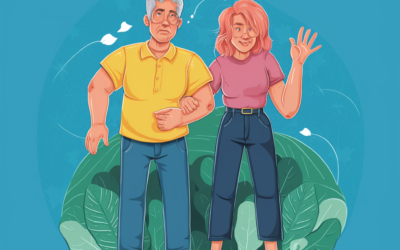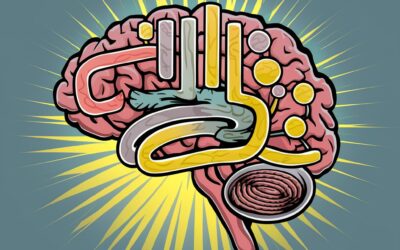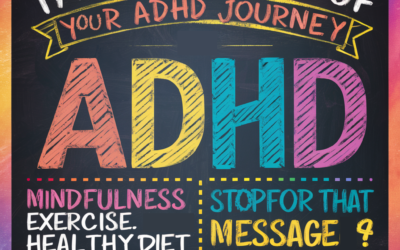In this post we are reviewing chapter 6 from the Dr. Joe Dispenza book Breaking the Habit of Being Yourself.
Chapter six is called Three brains: Thinking, to Doing, to Being.
This chapter is about the brain and how it works with the meditation process to improve your life.
First is that change begins with thinking.
We can form new neurological connections and circuits that reflect our new thoughts and nothing gets the brain more excited than when it's learning and assimilating knowledge. Experiences like these are like aphrodisiacs for the brain because in a sense it's reading signals from our five senses.
Every second the brain's processing bits of data which it analyzes, examines, identifies, extrapolates, classifies and files information which you can retrieve for use on an as-needed basis.
In the previous chapter reviews you might recall when Dr. Joe Dispenza was talking about how the nerve cells that fire together wire together. This is known as Hebbian learning. The reverse of is also true. Nerve cells that no longer fire together also no longer wire together. What fires apart, unwires!
In other words if you don't use it you lose it. And this good if you're looking to no longer fire together behaviours, traits and habits that don't serve you.
For example, let's say a person had a problem with alcoholism or getting over a breakup.
A transition or new trajectory is wanted. If they had stopped thinking in those problem related ways, more and more of those connections begin to die off and prune away. That's how people are able to let go of problems and this helps to rewire the brain. The less they think about drinking or the ex, the more those connections fade away.
Dr. Joe Dispenza calls this unlearning and learning and it creates the opportunity for us to rise above our current limitations and be greater than our conditioning or circumstances. In creating a new habit of being ourselves we are essentially taking conscious control over what had been an unconscious process of being.
To change our lives we first have to change our thoughts and our feelings. Then we have to change our actions or our behaviors to have a new experience which in turn produces a new feeling. Then we must memorize that feeling until we move into a new state of being which is when mind and body are one.
Let's break this down to understand what the brain is doing when we are seeking to create change.
Dr. Joe Dispenza focuses on parts of the brain that relates specifically to breaking the habit of being ourselves and these parts are:
Neocortex, the limbic brain and the cerebellum.
First is our thinking brain, the neocortex.
If the neocortex had a motto it might be that knowledge is for the mind
This is the brains walnut like outer covering. This is the newest most advanced neurological hardware for humanity. The neocortex is the seat of the conscious mind, our identity and other higher brain functions. Essentially this neocortex is the brain's architect or designer and it allows you to learn, remember, reason, analyze, plan, speculate on possibilities, invent and communicate. Since this area is where you log sensory data such as what you see and hear, this neocortex plugs you into external reality.
In general this neocortex processes knowledge and experience. First you gather knowledge in the form of facts or semantic information prompting the neocortex to add new synaptic connections and circuits. Once you decide to personalize or apply that knowledge to demonstrate what you learned you will create a new experience and this causes patterns of neurons called neural networks to form in the neocortex.
For example, let's say you want to become a website designer. Then you went to a meet-up, met a friend and they knew how to do some web design. Then they introduced you to a group of friends that all do web design. Then you meet up the next day and again a few days later. After a week you're far more informed about designing. Well the brain is kind of like that too. At first there is little firing and wiring on the topic. Soon you begin to dig into the research and become more familiar with website design. As you're learning something you're creating networks of firing neurons where they all begin to create this patterned cluster around repeated thoughts. These networks reinforce the circuitry of what you've already learned intellectually. Your neocortex is responsible for processing ideas that you have not yet experienced which exists as a potential for you to embrace at some future time.
For example, let's say a person's looking for Alcoholics rehabilitation. They may not have ever thought of what it would be like to be sober at a party and not have a drink. That would be a new idea. As the person begins to entertain those new thoughts they begin to think about potentially modifying their behaviors. By creating these thoughts it begins to layout some of the ideas to do something differently when the opportunity presents itself to create a new outcome.
Then as you alter your routine actions and typical behaviors, something different from the norm should happen which will produce a new event for you to experience.
Limbic Brain
Next is the limbic brain which processes chemicals to help us remember experiences. This is the emotional center of the brain. The limbic brain, also known as the mammalian brain is located under the neocortex and it's the most highly developed and specialized area of the brain. Think of this limbic brain as the chemical or emotional brain.
This limbic brain assists in forming long-term memories. You can remember any experience better because you can recall how you felt emotionally while the event was occurring. Since this limbic brain helps us to remember things that were emotionally charged, our experiences can be marked emotionally by these experiences and if this limbic brain had a motto it might be experience is for the body.
Knowledge is for the mind and experience is for the body. When you apply knowledge and create a new experience, then you're teaching the body what the mind has intellectually learned. That way it's not just about learning the information but embracing it with your emotions and body.
An example is your 215th day at school. You probably don't remember that day. You probably don't remember the third time that you kissed somebody, but you probably remember your first love or your first day of school.
This is because there was a lot of emotion and novelty involved with those first experiences. This is partly due to the work of the limbic brain. That's what it's doing. It's learning, linking and storing associations to events and then attaching it to emotions because these were novel experiences and your brain wants to make sure that you survive when new stuff is going on. These emotion based memories last and are important to let you know of danger or to recall if a person is friend or foe. We may not remember a persons name but we remember how they made us feel. Instead of remembering it intellectually we learn with emotions and memories inside of this limbic system.
Cerebellum.
The third part is the cerebellum which stores habitual thoughts, attitudes and behavior. The example from the book is when you forget a locker combination or maybe a time where you forgot your ATM PIN number, but as soon as your fingers went to the keypad, your body recalled that information which is stored in your cerebellum.
When the body knows equal to or better than the conscious mind, you can repeat an experience at will without much conscious effort, then you have memorized the action, behavior, attitude or emotional reaction until it has become a skill or a habit.
When you have reached this level of ability you have moved into a state of being.
The cerebellum, the seat of the subconscious, is located at the back of the skull. Think of it like the brains microprocessor and memory center. Every neuron in the cerebellum has a potential to connect with at least 200,000 and up to a million other cells to process balance, coordination, awareness of the spatial relation of body parts and execution of controlled movements.
Think of when you see somebody dancing or doing acrobatics in the Olympics. They're doing athletic movements over and over and over ... they're not thinking about where to put their elbow, left foot or how to properly somersault. They've got it all hardwired into their cerebellum.
This is why you can't forget how to ride a bicycle because it's hardwired in your cerebellum. It stores certain types of simple actions and skills along with hardwired attitudes, emotional reactions, repeated actions, habits, conditioned behaviors, unconscious reflexes and skills that we've mastered and memorized.
It has amazing memory storage and it easily downloads various forms of learned information into programmed states of mind and body. When you're in a state of being you begin to memorize a new neural chemical cells and that's when the cerebellum takes over in making that new state and implicit part of your subconscious programming.
The cerebellum is the site of non declarative memories meaning that you've done or practiced something many times that it becomes second nature and you don't have to think about it. When you've learned something that's become embedded or programmed into your cerebellum you will arrive at a point when a behavior, skill or trait you've been focusing on and rehearsing mentally or physically will become a memorized program of the new self.
Let's connect these dots together.
First through conscious mental rehearsal the thinking brain (neocortex), uses knowledge to activate new circuits and new ways to make a new mind.
Then our thought creates an experience and via the emotional brain or the limbic system, that produces a new emotion. Then our thinking and feeling brain conditions the body to a new mind.
Finally if we reach the point where mind and body are working as one, then the cerebellum enables us to memorize a new neurochemical self. That new state of being is now a program in our subconscious.
This is wonderful in theory but for most of us to go from thinking to doing to being is very difficult. We want to stay in the intellectual and the philosophical and make lists and plans but getting ourselves to take consistent action can be challenging. We like to identify with those old memorized recognizable feelings of our familiar self.
The thing to do instead is to be interrupting those habitual emotional reactions and foregoing those knee-jerk behaviors by planning and rehearsing new ways of being by putting yourself into the equation of that knowledge you learned in creating a new mind.
By mentally rehearsing you begin to psychologically project yourself into a potential situation ahead of the actual experience. You're beginning to rewire your neural circuitry to look as though the event had already taken place. Once these new neural networks begin to fire in unison, then your brain has created a vision or hologram representing the ideal that you are focused on becoming.
When you are thinking about and having these visualizations more real than anything else, this becomes more embedded into your thinking, emotions and your body.
To sum up this chapter with one sentence it would be where Joe Dispenza says 'mastery is when our internal chemical state is greater than anything in our external world.'
When you can maintain better control of your internal state then you can think and act more as you choose because ultimately if you can master suffering, you can just as easily master joy, but it's easier said than done because we all have this negativity bias hardwiring in place. We remember insults more than compliments because of this bias.
For example let's say you were invited to an event and were feeling kind of depressed. You'd probably say 'no I don't feel like it.'
You might also have memorized this emotional state of doom and gloom. Being in this way can feel hopeless as if nothing in your environment, no person, no experience, no condition, nothing is going to move you out of that internal chemical state of suffering. It feel more familiar to be miserable than to be happy. Due to habit, nothing's going to distract you away from that internal emotional dependency.
How to break that habit? Let's say that you had to go to a family function and there's a relative there who's a bit of a knuckle head. Maybe they have different value systems so you don't really see eye to eye on a lot of things. In the past you might have activated stressful emotions in preparation for dealing with them. To change that habit you might want to consider what it could be like to rehearse compassionate feelings towards them so that when you see them, compassion and love would feel automatic and familiar to you. With practice those self limiting emotions of the past would change and unwire due to your conscious efforts to stop them from firing.
So now you need to replicate this experience of thinking, feeling and acting with compassion and doing so will contribute to breaking the addiction of your past emotional state so that you can neurochemically condition your body and mind to memorize the internal chemical state called compassion better than your conscious mind. Ultimately if you repeatedly recreate the experience of compassion at will and by practice it independent of any circumstance in your life, your body would become the mind of compassion.
You would memorize compassion so well that nothing from your outside world would move you from this state of being. At that point you have all three brains working together and you are biologically, neurochemically and genetically in a state of compassion. When compassion becomes unconditionally ordinary and familiar for you, then you have progressed from knowledge to experience to wisdom.
Wisdom is accumulated knowledge that has been gained through repeated experience and when being compassionate is as natural as suffering, judging, blaming or being frustrated, negative or insecure then we are wise, we are liberated to seize new opportunities because somehow life seems to organize itself equal to how or who we are being.
One of evolutions great gifts to us as humans is the ability to go from thinking to being without taking any physical action. In other words we can create a state of being ahead of having any actual material experience.
For example, if you wanted to increase your stress levels you could think about somebody that aggravates you and then imagine making their face bigger, brighter, their voice louder and it can easily cause you to change your state.
Conversely you can think of a pleasant memory, zoom into that past experience by amplifying your sensory recollection of it and notice how your body will be cooperating accordingly. You can use your brain to change your state of being so consider how far you can take this for training yourself to become more of how you want to be.
You can you create and live a chosen reality and meditation can help. Meditation allows us to change our brains, our bodies and our state of being without having to take any physical action or have any interaction with the external environment. Through meditation we can install the necessary neurological hardware, just like those piano players that were doing finger exercises and mental rehearsals which changed the muscles in their fingers. That's mental rehearsal in action.
What would you envision for yourself if you were to create a new ideal of you?
Essentially the meditative process allows you to answer this question by bringing together all of the information learned and wired synaptically into your brain about what it means to be happy, content, satisfied and at peace. With meditation you can take that knowledge and place yourself in that equation by practicing living in a state of happiness.
Once you experience that new mind then your brain creates a kind of holographic image that gives you a model to follow in creating your future reality because you would know what you would perhaps look or sound like, what kind of people you'd be with, how you'd be feeling about doing some stuff and what kind of accomplishments you might have.
You can bring all this together and your knowledge and experience of those qualities of happiness of courage and conviction to produce this emotional effect within you and the result will be this state of mind. By repeatedly producing that state of mind it will become familiar to you as you are wiring in new circuits. The more often you produce that state of mind, the more those thoughts become the experience. When that thought experience transformation takes place, the end product of that experience will be a feeling and emotion. When this occurs, your body as the unconscious mind does not know the difference between an event that takes place in physical reality and the emotions you created by thought alone so as someone who is conditioning the body into a new mind you'll find that your thinking brain and the emotional brain are now working in concert.
Remember that thoughts are for the brain and feelings are for the body and so when you are thinking and feeling in a specific way as part of the meditative process then you are different from when you started.
The neurological and chemical changes that have been produced by those thoughts and emotions have altered you in such a way that there is physical evidence in the brain and body that shows those changes. At that point you've moved into that state of being. You're no longer just practicing happiness or just going through the motions of gratitude. You're being grateful or happy and you can produce that state of mind and body everyday. You can continually re-experience an event and produce the emotional response to that experience of how you would feel as that new ideal self.
I want to share a couple of examples from research done by scientists and by looking at one of the greatest athletes of all time.
An experiment was done on meditators and the results showed that 'meditation experience is associated with increased cortical thickness.'
That study was with two groups of people. The control group and a group of long-term meditators. What they found is that the long-term meditators had increased gray matter in the insula and the auditory and sensory cortex. This makes sense because while these people are meditating, they're paying attention to sounds which is going to cause a shift in their auditory and sensory cortex. The results had shown that they had more gray matter in the frontal cortex which again is associated with working memory and executive decision-making.
But maybe those meditators had a bigger brain to begin with?
Maybe they had a larger cortical thickness before they ever meditated?
So they did an additional study where they had two groups of meditation novices. After measuring their brains they would do mindfulness based stress reduction meditation with one group and a regular meditation with the other group. After 8 weeks, they found that the brain changed in different ways such as:
The posterior cingulate which is involved in mind wandering and self relevance.
Also the left hippocampus had shown growth and change. The left hippocampus assists in learning, cognition, memory and emotional regulation.
Another change was in the temporal parietal Junction or the TPJ which is associated with perspective taking in empathy and compassion.
Another change was found in the pons which is an area of the brain stem where a lot of regulatory and neurotransmitters are produced.
Lastly, the people that we're doing the mindfulness based stress reduction (MBSR) had changes in their amygdala, the fight-or-flight part of the limbic brain. This amygdala got smaller which was also correlated to a reduction in stress levels.
With just eight weeks of meditation there were physiological changes in their brain relating to these areas just from meditation alone.
Now let's look at this from a different point of view with the greatest athlete of all time. I'm talking about the winner of the most Olympic gold medals (8) Michael Phelps.
When he was practicing every single day, including his birthday, Christmas, Boxing Day and the days he doesn't feel good was meditate for two hours in the pool.
His coach said "before a race Michael gets into a relaxed state, he mentally rehearses for two hours a day in the pool. He sees himself winning. He smelled the air tastes the water hears the sound and sees the clock and he also sees himself from the outside as a spectator in the stands and he also sees himself overcoming obstacles."
Michael Phelps also envisioned himself screwing up, falling behind in the race and then imagining himself feeling calm, cool yet still feeling energized with the feeling like this is still a winnable race. Every single day for two hours he'd be meditating and visualizing winning his Olympic gold medals.
Dr. Joe Dispenza says if you can get up from your meditative session and be in that new state of being, altered neurologically, biologically, chemically and genetically then you have activated those changes ahead of any experience and you will be more prone to acting and thinking in ways equal to who you are being and would have broken the habit of being yourself. This is exactly what Michael Phelps was doing.
When you are mentally rehearsing a new mind, there will come a moment when that thought will become the experience and when this occurs the end product of that inward experience will be a particular emotion. That's when your mind and body begin to work as one and you are being that person, somewhat like that swimmer who was imagining doing all that work in the pool before doing any of the strokes.
As you move into a new state of being by thought alone, you'll be more prone to do and think equal to how you are being. This new state of being creates a new personality. A new personality produces a new personal reality.
Here's where coherent signals really come into play. If you can send into the quantum field a signal coherent in thought and feeling independent of the external world, then something different will show up in your life and when it does you'll no doubt experience a powerful emotional response which will inspire you to create a new reality once again.
And you can ramp up that emotion so your body experiences that event as real to you just like it would have for Michael Phelps. He's imagining what the water would feel like, what the air smells and tastes like and he's using all of his sensory awareness and integrative mechanisms in the brain which responds more robustly to this multi-sensory data.
The moment you're in that state of being and present in that experience, that's when you're connected to all possible realities that exist in the quantum field. This is important to remember because if you are focused on the past or the future based on your familiar emotions or anticipation of some effect, then you don't have access to all possibilities in the quantum field.
To access the quantum field is by being present and knowing that this isn't just an intellectual process. These thoughts and the feelings must be coherent. Meditation requires that you get out of your head, move into your heart and think about how it would feel if you embodied a combination of all the traits that you admire which makeup your ideal self.
You might object that you can't know how you would feel because you've never experienced having those traits. To this Dr. Joe Dispenza says that your body can experience this ahead of a future desire that you've never experienced. There are some emotions you've experienced and some incredible ideas that you would love to manifest in your life. By priming that pump by means of generating fantasy ideas and cranking up the emotions of an imagined event you can begin to wash away emotional residue of the past.
Dr. Joe Dispenza says if you are in a state of greatness then this signal you send into the quantum field is that the events have already come to pass. Giving thanks allows you to emotionally condition your body to believe that what is producing your gratitude has already happened.
By activating and coordinating your three brains in a meditation allows you to move from thinking to being and once you are in that new state of being you are more prone to act and think equal to who you are being.
You might find it difficult to move into that state of gratitude or to give thanks ahead of the actual experience. For myself it was because I was living by a memorized emotion which became part of my identity like a subconscious program which had me feel what I'd been accustomed to.
We'll get into more about how to be able to change that gap as we progress further through these additional chapters. For now understand that when you can readily feel gratitude or joy or fall in love with the future without needing any person, thing or experience to cause you to feel that way, then these elevated emotions will be available to fuel your creation.
For the video review see below:
The 5-Day Re-Invent Meditation Retreat in Sedona, Arizona
Nestled in the...
Benefits of Journaling
Journaling is a...
How to Cure PTSD Four Times in 5 Hours
This case study...
The Ultimate Guide to Walking with a Weighted Vest for Maximum Fitness Benefits
Walking with a...
The Audiobook Market’s Adaptation to Cultural Changes
Today, we're going...
The New Midlife Crisis: Navigating the Challenges of Middle Age
In the...
Stop Overthinking and Anxiety: Practical Tips to Quiet Your Mind
How many of you...
Musashi Miyamoto – Review of ‘The Way of Walking Alone’
Musashi Miyamoto...
Managing ADHD: Strategies for Improving Focus, Organization, and Productivity
Attention-Deficit/Hyp...






















